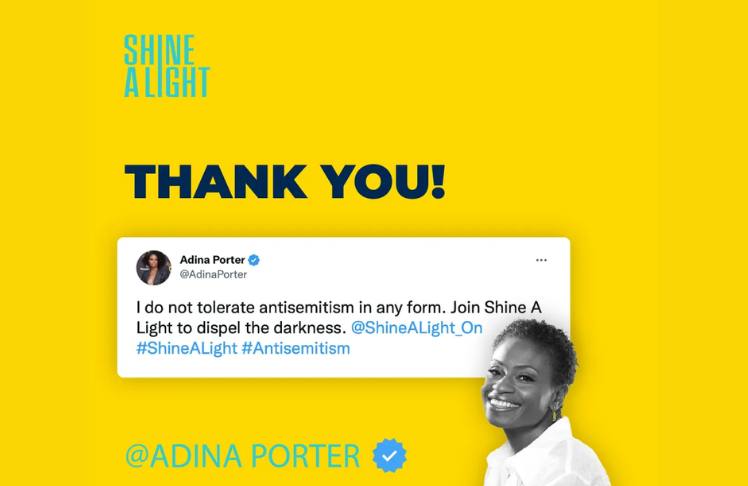
by Liz Dwyer
Fourth grade is the first time I remember seeing a swastika.
On the very first day of school, I went to my classroom, found my assigned seat, sat down, and there, etched into the top of the desk, was that symbol of hate.
Even at that young age, I knew what a swastika was — we were a PBS-watching household — so I raised my hand to tell the teacher.
Even though most of us can recognize a swastika, we might not be aware of some of the other everyday forms of anti-Jewish prejudice.
That’s why Shine A Light, a platform bringing together “organizations, companies, institutions and individuals to unite in shining a light on antisemitism in all its modern forms,” is getting everyone on the same page.
Their latest video, “8 Ways to Spot Antisemitism,” breaks down some of the most common forms of anti-Jewish discrimination, hatred, hostility, violence, or oppression.
The video is certainly needed. According to the Antidefamation League, “antisemitic incidents reached an all-time high in the United States in 2021.
Hate Doesn’t Exist in a Silo
Fourth grade was my first time attending a predominantly white school — there was one other Black student in my entire grade. And, that year, I learned that people who promote — or enable — antisemitism usually have no love for Black folks.
We can look at the post-Elon-Musk-as-owner explosion of hate on Twitter as an example.
As the New York Times reported, “slurs against Black Americans showed up on the social media service an average of 1,282 times a day. After the billionaire became Twitter’s owner, they jumped to 3,876 times a day.”
That’s a 202% increase in day-to-day anti-Black slurs. In addition, there’s been a 61% increase in antisemitic posts “referring to Jews or Judaism.”
Twitter users who are Black and Jewish now get to experience an intersectional deluge of the n-word and Nazi memes — all in the name of free speech.
As Shine A Light’s video demonstrates, not all antisemitism is as blatant as a swastika on a desk.
But, in the end, we’re all affected by it.
I recall how my teacher ignored my raised hand for several minutes and then finally called on me. I told her about the swastika and asked to have my seat moved — or maybe the desk could be thrown away. I didn’t know. I just knew a swastika was bad, and I didn’t want to have to look at it every day.
However, she replied that she was only interested in questions about what she’d been talking about — and, by the way, I’d be getting detention at recess for not paying attention in class.
From African American G.I.s fighting to defeat Nazi Germany in World War II, to young Jewish men and women rising up during the civil rights movement, the Black and Jewish communities have long fought for justice alongside each other.
And, as historian Marc Dollinger explained to NPR Code Switch in 2018, “Jewish leaders leveraged the thinking of Black power activists to strengthen Jewish identity in many of the ways that Black power was strengthening Black identity.”
Getting people to understand the insidious ways antisemitism — and prejudice and hate of any kind — creeps into our hearts and minds is the goal of Shine A Light’s campaign.
If we don’t know what we’re up against — if we can’t recognize antisemitism when it comes around, we can’t do our part to stamp it out, once and for all.















